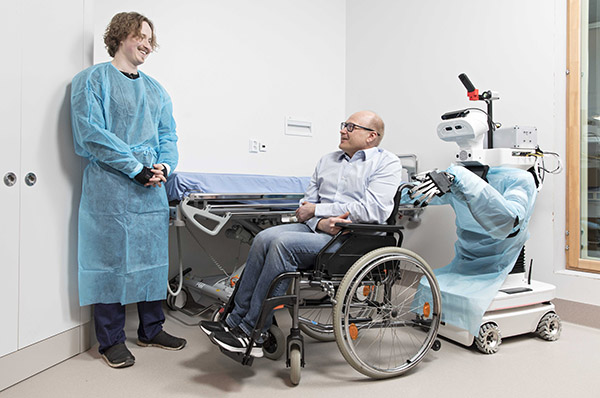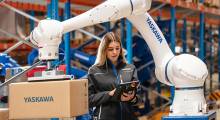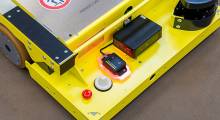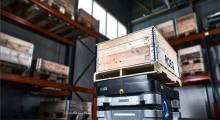While the COVID-19 pandemic increased interest in robots for disinfection and social distancing, robots also promise to help shorthanded hospital staffs diagnose patients while reducing the spread of pathogens. Touchlab yesterday said that a hospital in Finland is using its Välkky system, which is designed to give remote clinicians a sense of touch.
“In the past, telerobots have been limited to being able to see, hear, and speak on behalf of the people using them,” stated Dr. Zaki Hussein, CEO of Touchlab. “Now, thanks to our innovative e-skin technology, robots like Välkky can ‘feel’ too—and not only on their fingertips.”
Edinburgh, U.K.-based Touchlab said its electronic skin, or “e-skin,” is necessary for robots to better sense the world around them, improve dexterous grasping and teleoperated manipulation, and be ready for mass adoption.
The company added that it is applying its sensing and telerobotics technologies to new applications. Touchlab is a finalist in the ANA Avatar XPRIZE competition.
Last year, it received $4.8 million in seed funding from Octopus Ventures, which claims to be one of the largest “deep tech” investors in Europe.
Tactile sensors allow remote control of Välkky
Touchlab said it has developed low-profile tactile sensors thinner than human skin that can be wrapped around hard or soft robots. The company's e-skin is composed of single or multiple ultra-thin force sensors to transmit sensations such as pressure, vibration, or motion from a robot to a user in real time.
Operators can use a wearable haptic glove to control Välkky, which is the first robot of its kind, claimed Touchlab. It can serve meals, move assistive devices, or help brush a patient's hair, the company said.
Additional applications for the technology could include nuclear decommissioning, said Touchlab. Robots with a sense of touch could reduce employee exposure to jobs that are hazardous, as well as enter more people's daily lives, it noted.
“Touchlab uses the latest robotics innovations very impressively to help address some of healthcare’s current challenges at Laakso Hospital,” said Narcís Miguel i Baños, head of mobile manipulation at PAL Robotics. “[The] Välkky robot is built using our platform—[the] TIAGo robot was designed by PAL Robotics to be a collaborative robot that works with humans for use cases such as health and industry—and the Laakso Hospital project fits perfectly with this.”
Hospital could automate day-to-day tasks
According to the World Health Organization (WHO), 15% of patients in low- and middle-income countries acquire at least one healthcare-associated infection (HAI) during their hospital stay. On average, 1 in every 10 affected patients dies as a result of their HAI.
In addition, there are more than more than 43,000 registered nursing vacancies in England, reported Nursing Times. Touchlab said it hopes that Välkky will free staffers to focus on more complex nursing tasks while the robot carries out routine clinical duties. These include measuring vital signs such as pulse, temperature, and blood oxygen saturation.
During a three-month pilot at Laakso Hospital in Helsinki, Finland, a team of trained nurses will explore how robots can help deliver care, reduce workloads, and prevent the spread of infectious diseases. Forum Virium Helsinki, an innovation company for the city of Helsinki, is coordinating the pilot.
“Envisioning a future where robots and caregivers collaborate seamlessly is something I find incredibly exciting,” said Kirsi Ahonen, head nurse and project manager at Laakso Hospital. “Our long-term goal is for Välkky to assist in a variety of day-to-day ward tasks to ensure the delivery of comprehensive patient monitoring and care.”
“While Välkky will initially be deployed on a smaller scale, undertaking tasks like retrieving fallen items or taking patient vitals, it has the potential to help with a number of more complex jobs,” she said. “This includes patient lifting, which could help alleviate potential physical injuries for staff, and reducing the spread of infection.”
“The integration of cutting-edge robotics into our healthcare team marks an exciting milestone,” Ahonen said. “Innovative technology like Välkky has the potential to revolutionize how we deliver patient care, support our dedicated staff, and continue to provide exceptional care for our patients.”
The research is part of a wider €7 billion ($7.57 billion U.S.) project aimed at developing the most advanced hospital in Europe, due to be completed in 2028.
“This ground-breaking pilot with our partners at Laakso Hospital is helping to enable new and unprecedented applications in robotics,” said Hussein. “It’s our ambition that the anonymized, real-time data gathered throughout the project will help prove that semi-autonomous robots can co-exist with and support professionals in a variety of industries like healthcare and the transition to greener energy sources.”
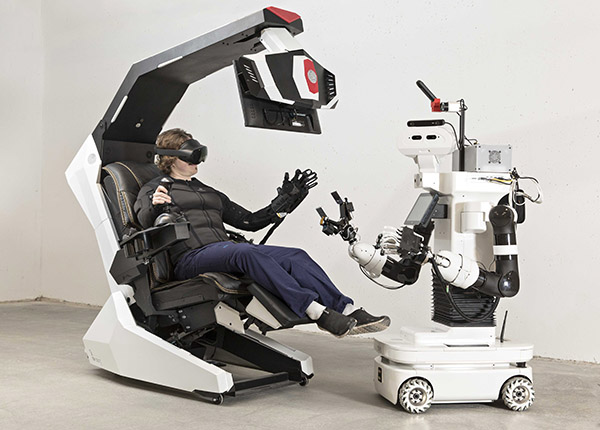
Touchlab a new National Robotarium tenant
Touchlab has recently taken up residency at the National Robotarium, a £22.4 million ($28.3 million) research facility that officially opened in September 2022. The facility said it works with academic and industrial partners from around the world to define, develop, and resolve industry challenges by applying robotics and artificial intelligence.
“As robotic and AI technologies continue to advance, we increasingly have the opportunity to support people in jobs that are potentially hazardous to their health or physical wellbeing,” said Lisa Farrell, business development manager at the National Robotarium. “Touchlab’s Finnish pilot exemplifies that opportunity, with benefits of the trial expected to include increasing nurse productivity and, significantly, reducing the spread of healthcare-acquired infections.”
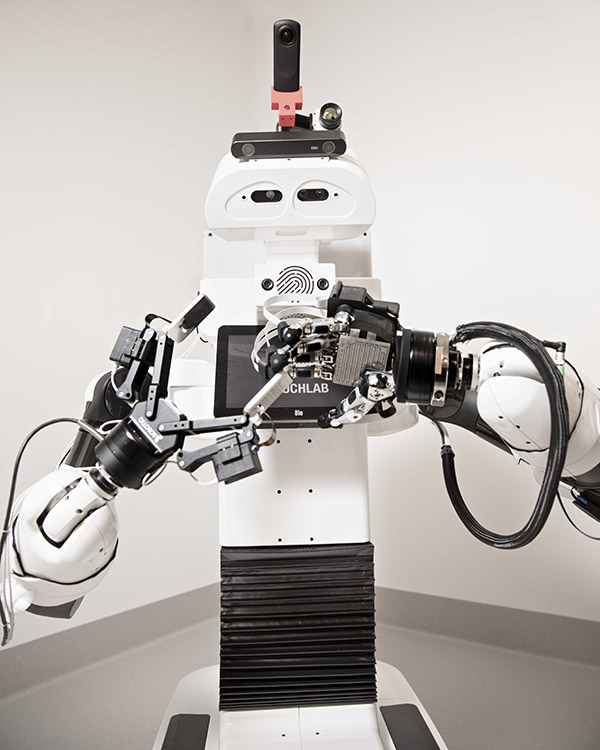
Touchlab said it will benefit from the National Robotarium’s incubation facilities and engineering expertise.
“Having access to the National Robotarium’s state-of-the-art office and lab facilities, including its ecosystem of collaborators, industry experts, and academic teams, will support us to put these findings into action and to continue developing impactful robotics technologies that are changing our collective futures,” said Hussein.
The National Robotarium is part of the “Data-Driven Innovation” initiative, supported by £21 million ($26.5 million) from the U.K. government and £1.4 million ($1.7 million) from the Scottish government. The initiative aims to turn Edinburgh into the “data capital of Europe” and is part of the wider £1.3 billion ($1.6 billion) Edinburgh and South-East Scotland City Region Deal.
“Using robots to carry out routine clinical duties can free nurses to perform more complex tasks,” stated Neil Gray, wellbeing economy secretary for the Scottish government. “Innovation and the use of ethical and trustworthy artificial intelligence can help deliver priorities in our National Strategy for Economic Transformation.”
Malcolm Offord, U.K. government minister for Scotland, added: “This pioneering research into remote robotic touch technology has great potential to deliver vital assistance to health staff, improve patient care, prevent the spread of infections or diseases, and reduce human exposure to hazardous jobs such as handling toxic waste.”
Article topics
Email Sign Up

